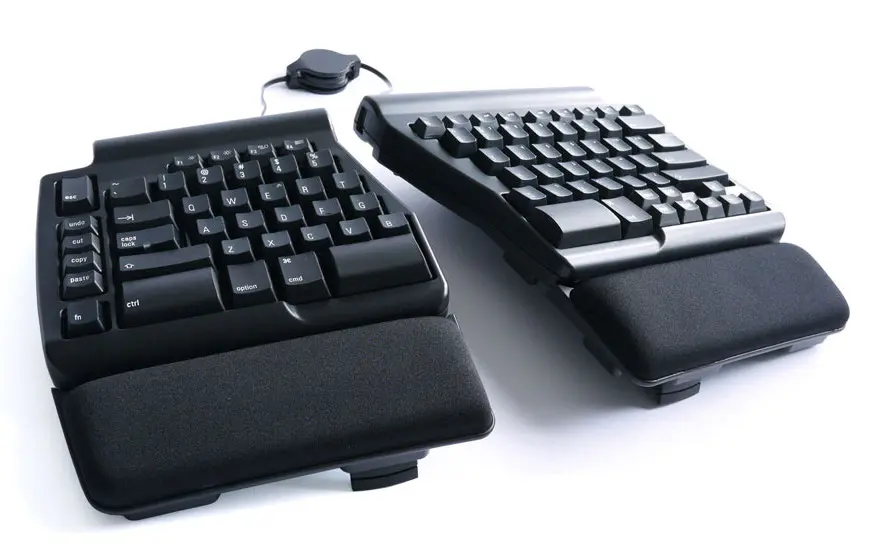The Best Shredders For Your Home
If you are on the hunt for the best shredder, you’ve come to the right place. If you deal with sensitive information while working from home, a shredder is a necessary home office accessory. We reviewed dozens of shredders to bring you a few great choices.
As an affiliate partner, I may earn qualifying purchases made on products.
1 AmazonBasics Cross-Cut Paper and Credit Card Shredder
Top ProductPerfect for working from home, this cross-cut shredder works well for destroying pay stubs, bills, receipts, bank statements, medical records, and other private documents or personal data.
More stable than a strip-cut shredder, the cross-cut functionality cuts diagonally in both directions through papers. Transforming your private sheets of paper into tiny protected paper particles. It can accommodate multi-page documents, and the removal of staples or small paper clips is not required first.
This shredder has all of the reliable functionality that you need.
2 Aurora High-Security Micro-Cut Paper Credit Card Shredder
Premium ChoiceStay safe from identity theft with the Aurora High-Security Micro-Cut shredder cuts through paper, CDs and credit cards. The 4.5-gallon pullout basket is the perfect home and small office. The Aurora accepts up to ten sheets of paper at a time and shreds them into tiny pieces. The opening of the shredder is 8.7 inches wide to accommodate any document and has casters (wheels) for easy mobility. Keep vital information from falling into the wrong hands with this great quality shredder.
3 Aurora Professional Strip Cut Shredder
Best ValueThis small shredder is a great home office option because it can easily be stored and only used when needed. The Aurora Professional accepts up to eight sheets of paper at a time and shreds them into 1/4-inch strips at a speedy 9.8 feet per minute. Designed to provide economical document security, this paper shredder is the perfect home device to help keep you safe from identity theft.
In addition to paper, the shredder can destroy CDs and credit cards, keeping vital information from falling into the wrong hands. The extendable arm fits over a wastebasket to easily collect the destroyed paper and documents.
Guide To Buying A Shredder
How Shredders Work
Shredders usually either cut the paper into strips or cross cut paper into tiny squares. Strip-cut shredders may use rotating blades to cut the paper and other materials into strips. Cross-cut shredders use two different sets of teeth that rotate in opposite directions, resulting in much smaller, square particles.
When objects are inserted into the shredder’s throat, a sensor is activated and the shredder pulls the paper into the jaws of the shredder. The paper or other material is pulled through the blades or “jaws” of the machine and typically fall into a receptacle that is part of the shredder.
The receptacles can vary in size and are measured in gallons. Some portable shredders do not have receptacles but can be easily fit over common waste baskets. Most shredders will stop functioning once the receptacle is full.
I have a home office shredder and love using it to shred tax documents, bank statements, and other sensitive information I no longer need. My shredder sits next to my ladder desk and is easy to use, fast, and quiet. When I complete a number of shred jobs I empty my shredder in the recycling. My shredder has a solid motor, is durable, and can shred roughly 20 pages per shred job. This makes shredding simple and easy.
I have fairly straightforward shredding needs. I am not a government agency or dealing with classified information. And therefore, I don’t require the highest standard in shredding security. As such, I have learned the basics of what makes a good home office shredder: the price, size, strength, and ease of use. To help you make an informed shredding decision I have outlined and articulated a few other of the most key variables you should consider when buying a home office shredder.
Shredder Basics: Types of Shredder Outputs
When buying a shredder, there are a number of key security, performance, and optimization variables that you must consider before making a purchasing decision. Fundamentally, there are different types of shredders and you will want to understand the differences between the shredders to make a smart home office purchasing decision.
For example some shredders strip-cut or cross-cut the documents that you are shredding. These different types of shredding techniques comply with different security standards. So among the first questions you should ask is what kind of information are you shredding, and how hi are your shredding standard needs. Cross-cut or micro-cut are considered the most secure so are ideal for highly sensitive confidential information and documents. Strip-cut is fine for shredding non-sensitive data and information and produces the long and narrow spaghetti like output you might imagine when thinking of a shredder.
Compare this output with a micro-cut shredder that yields roughly 4,000 particles per document (i.e. piece of paper). For most home office use-cases any shredder will work well. Only you know the security needs you aspire to and should buy a shredder that aligns with the degree of your confidential information.
Size of Shredders For Your Home Office
When shredding documents from home, there are a few variables Beyond fundamental security that you will likely want to understand. Firstly, you will want to know the sheet capacity of the shredder. This is because some shredders enable you to input many sheets at a time, and others do not. Likewise, some shredders enable you to ingest many pieces of paper over a long period of time without letting the shredder cool down. Conversely, some shredders need a cool-down period between shred jobs.
Both the sheet capacity and runtime ultimately will dictate the bin capacity as well. You will need to remove the bin and place it in the recycling or trash. So a smaller bin will necessitate additional trips to your recycling bins and a larger bin will require you to do this less frequently. Depending on how often you shred, this likely will not be a big deal. A standard home shredder can shred between 1-10 sheets at a time and has a 1-9 gallon capacity for paper. Office shredders tend to have 30+ gallon sizes in comparison.
Sheet Shredding and Shredder Speed
Do you need to shred 1-3 sheets at once? Or do you have more robust shredding needs and require shredding up to 20 pages at a time? Knowing your shredding needs will help you make an informed decision. A standard home shredder can easily shred between 10-20 sheets per shred job. And these jobs can be run back-to-back or in parallel with minimal downtime.
Also consider if you are buying a shredder to shred primarily loose leaf paper or reams of paper that are bound together. This is because if bounded together you will need a shredder that can ingest staples or plastics. Some shredders only shred paper whereas others are more powerful and can shred objects within the paper itself.
Other common items that might be shredded include paperclips, credi cards, IDs, CDs, DVDs, or even hard-drives. Most home office shredders can handle paper and a few staples. If your shredding needs are more advanced, you will need a more powerful shredder to handle stronger metals.
Manual vs Auto Feeding of Shredders and Undoing Mistakes
Some shredders enable you to scale your shredding work by enabling auto feeders that can help you shred without constantly adding paper to destroy. This is similar to a printer: you select the settings and then the shredder goes to work. This stands in comparison to a shredder that you manually add documents to. In this case the shredder is on stand-by mode and ready for paper that you feed it.
If you add a document or pile of paper by mistake (and don’t want this content shredded) you can push a reverse button. This will force the paper backwards to salvage part of the documents. This reverse button can also be used for paper jam prevention. Shredding jams occur most predominantly because a user adds too much paper to the shred job or the paper is not added in a straight fashion. The undo and reverse buttons can help mitigate jams.
Are shredders noisy?
Shredders are silent when not in operation but can produce a bit of noise when in operation. Usually shred jobs are started and completed rapidly and this will reduce the noise of the machine. Shredders, on average, produce the same noise as a typical washing machine but can complete jobs in as little as 5 seconds. Given a shredder’s utility and the security it provides, the slight noise is a bargain relative to the benefits you will obtain. Even with the slight noise that a shredder does produce, it’s for a short duration.
Fred splits his corporate time between the office and his WFH office. He believes that a few days of working remotely is a great way to boost productivity and employee happiness. Fred started WFH Adviser in order to share insights and products with people who are beginning their WFH journey.












